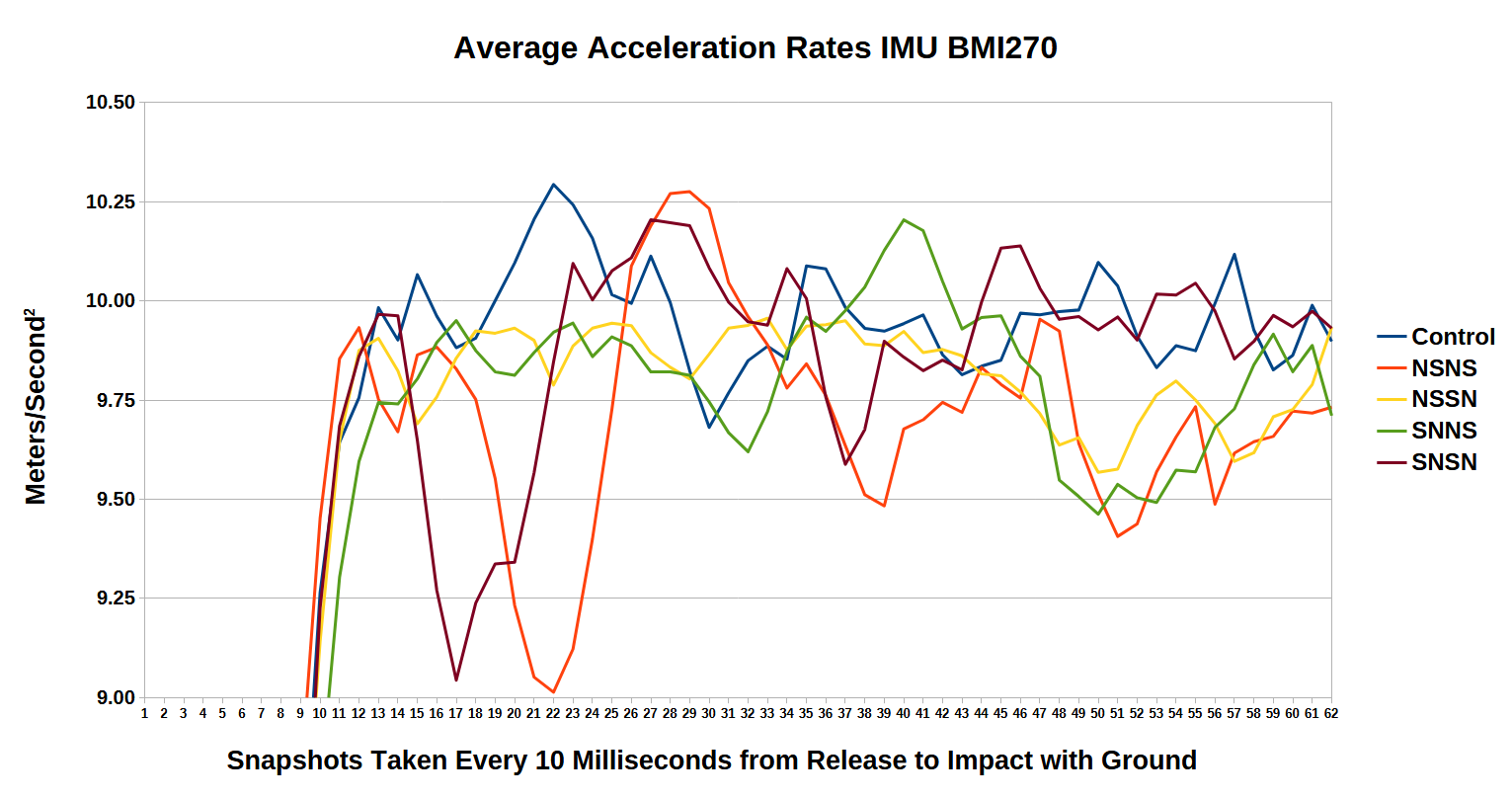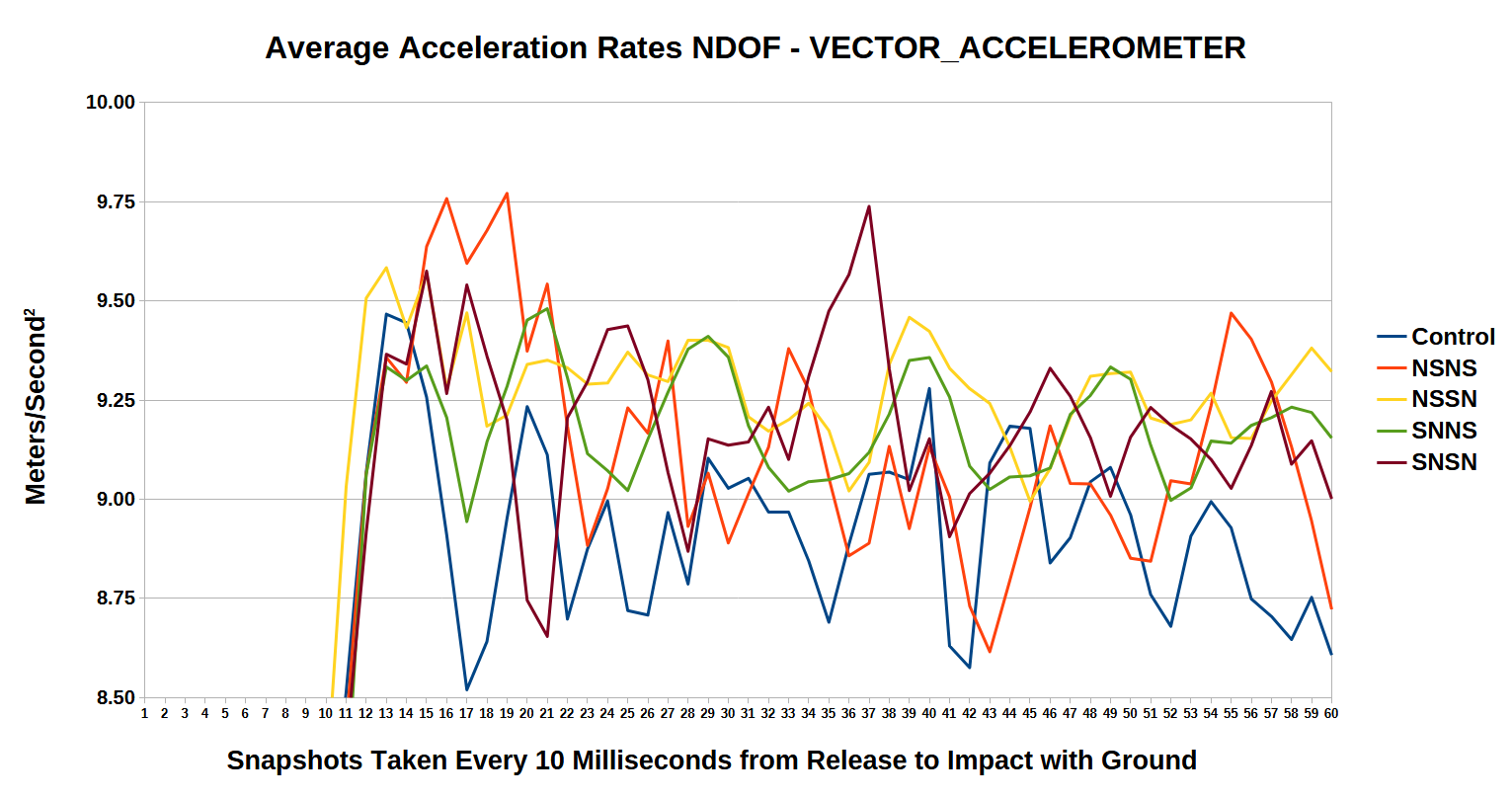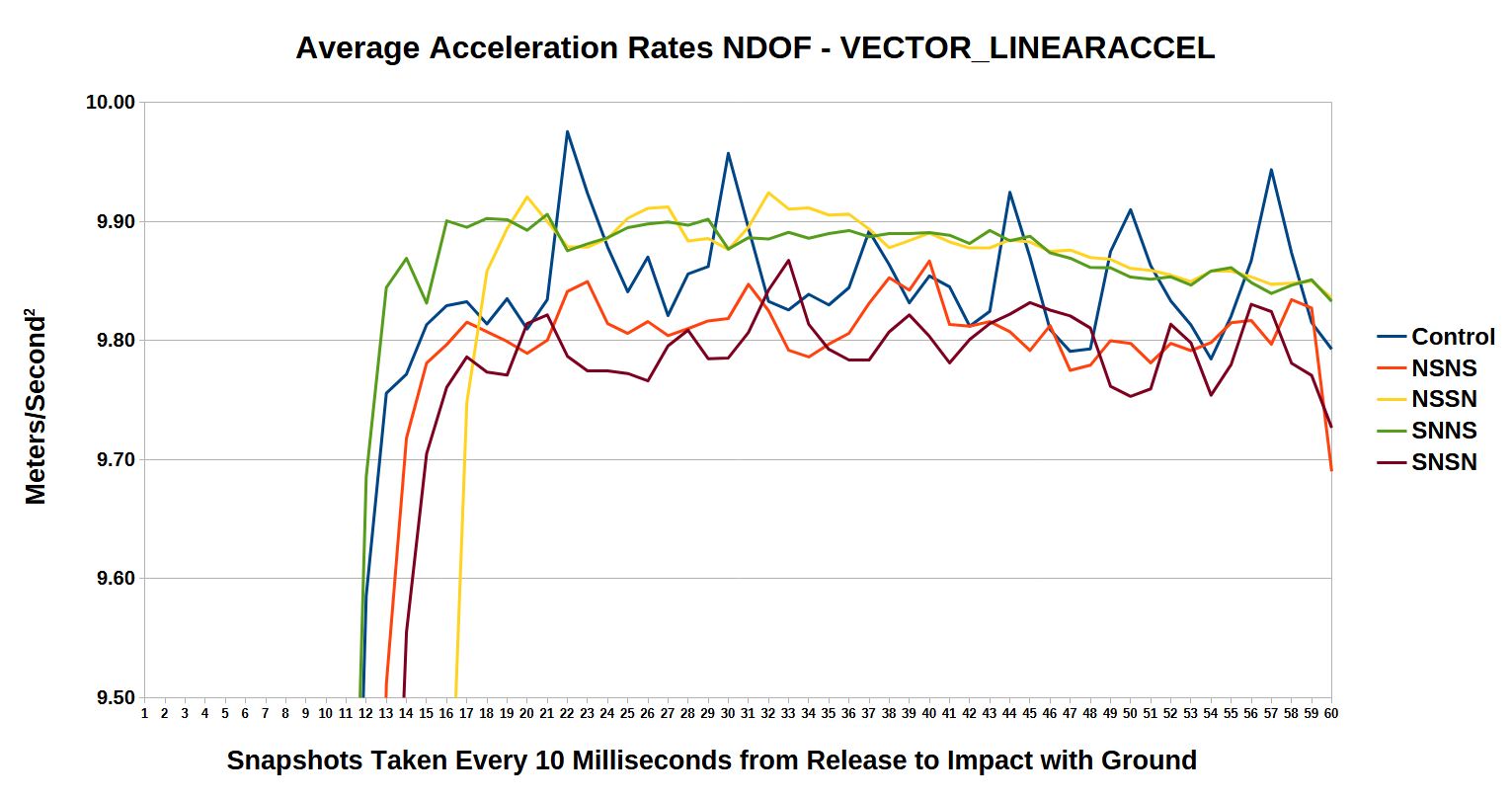Magnet Free-Fall Experiment
Mark 7 – Guidewire
The Mark 7 magnet free-fall object consists of using a Teflon coated guidewire with modified 3D printed plastic front shell and back shells based off of the Mark 5 experiments. The electronics consist of an Arduino Nano 33 BLE Rev2, BMI270 IMU, Adafruit BNO055 IMU, PowerBoost 500 Basic, a 3.7V Lipo 250mAh Battery, and a Control, NS/NS, NS/SN, SN/NS, and SN/SN magnet object.
Results
- Grade: F
-
- Average Acceleration: 9.7321 m/s2
- Magnet: 2 x N42, 2″ OD, 1/4″ ID, 1″ thick
- Height: 1.95 meters
- IMU: BMI270
- Drop Method: Hand
- Replication Warranted: No

- Grade: F
-
- Average Acceleration: 9.7709 m/s2
- Magnet: 2 x N42, 2″ OD, 1/4″ ID, 1″ thick
- Height: 2.13 meters
- IMU: BNO055
- Mode: NDOF_VECTOR_ACCELEROMETER
- Replication Warranted: No

- Grade: F
-
- Average Acceleration: 9.8668 m/s2
- Magnet: 2 x N42, 2″ OD, 1/4″ ID, 1″ thick
- Height: 2.13 meters
- IMU: BNO055
- Mode: NDOF_VECTOR_LINEARACCEL
- Replication Warranted: No

Overview
One of the main purposes of the experiment was to keep the free-fall object falling vertically the entire time. It was an abysmal failure as there was far too much friction between the Teflon coated guidewire and the Teflon tube that rided on it. Furthermore there was too much give in the guidewire causing the free-fall object to move around as it fell vertically increasing and decreasing its speed as this happened.
